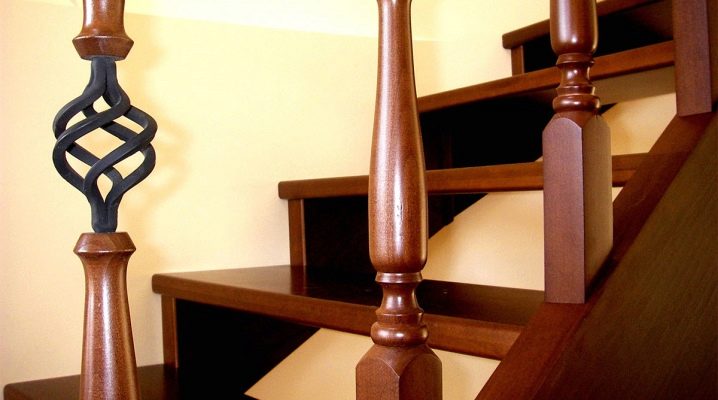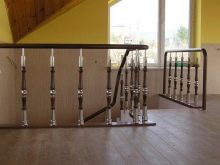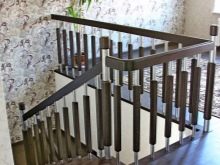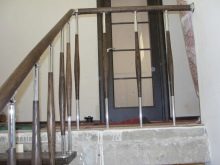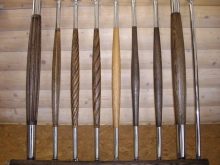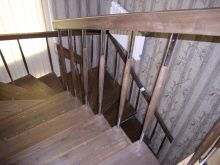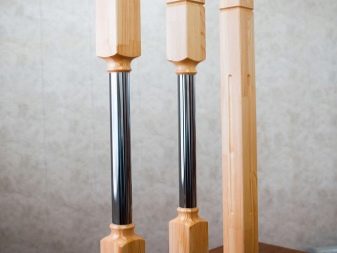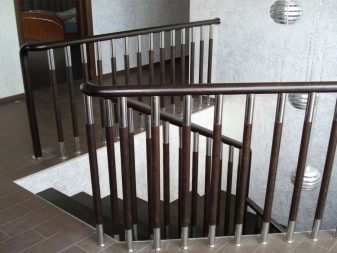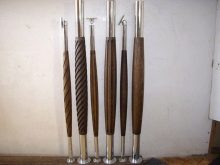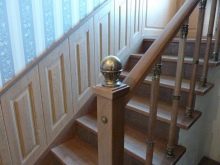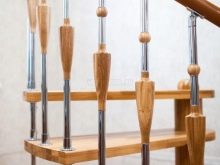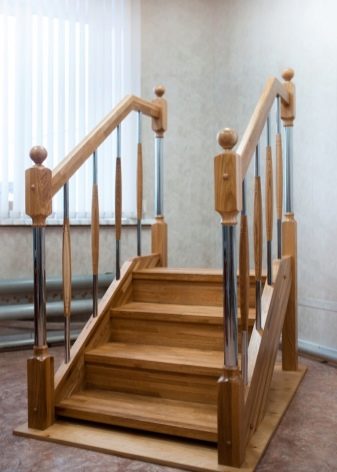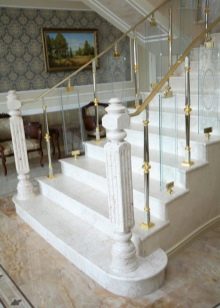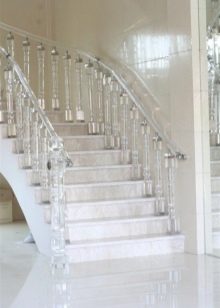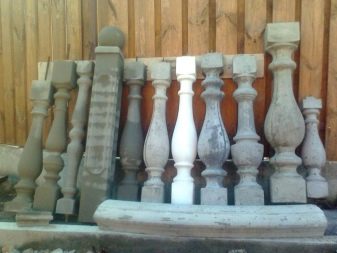Combined balusters: we select beautiful couples
Balusters for stairs always had their special place in the interiors of rich houses, and their beauty clearly showed the authority of the owner. They have a century of history and still retain their special place in the interior. Stairs without balusters are simply unthinkable.
Where are they used?
Balusters can be used not only for stairs, as mentioned above, but also for terraces, racks, balconies and various fences. As rare exceptions balusters can be seen on furniture: they can decorate cabinets, chairs, tables, upholstered furniture. Although the most common to see them on the stairs.
Most often they perform only a decorative function, while they are distinguished by easy installation and unpretentious operation.
But experts in the field of repair claim that their main function is safety, and only then they play the role of an effective element of the interior.
What is different from the pillars
For the stairs are purchased as balusters and pillars. The pillars play the role of support. Visually, they can be distinguished by size: they are thicker than balusters. The material for them is solid wood, most often - oak.
There are two types of poles: intermediate and entry. The first ones are always installed at the beginning and at the end of the stairs, and the second - on turns. As a rule, the design of the pillars is the same as that of balusters, the only difference is in size. For the manufacture of pillars on turns, softwood varieties are sometimes used.
There are stairs without balusters, only with pillars, or without support elements at all - this is a matter of taste and free finance available.
Materials used
Obviously, the material of wooden balusters is wood. Balusters can be made of oak, ash or beech. Accordingly, the metal - from steel, iron, chromium and even aluminum.
But more and more often combined balusters are on sale. One of their advantages is that they are suitable for almost all types of stairs. The most common combination is metal and wood.
By the type of combination of these materials balusters can be divided into two types:
- metal rack with wooden decor;
- wooden baluster with a metal decor (most often with stainless steel).
Both options are elegant, the difference is only in price due to different consumption of materials. A tree in combination with metal in the interior will always look advantageous, regardless of whether the wooden stand is decorated with metal parts or, on the contrary, the metal stands are made of wood.
Of the two types of combined balusters, models with a metal core and a wooden nozzle gained popularity. The price for one piece fluctuates around 300 rubles. The core is usually made of chrome or stainless steel, and a wooden nozzle at will and to order can be made of pine, oak or ash. The thickness of the metal, as a rule, is not large - only 1–2 mm. But at the same time, consumers note that such models are durable.
The mounting accessories are attached to the balusters.
Other combinations
Forged balusters can be made of different metals, such as brass, iron, cast iron, aluminum. Models combine their various kinds, giving as a result a fancy pattern. Only the hand of the master can create graceful and openwork lines,which will emphasize and complement the design of the room. There are even exclusive balusters covered in gold.
Often used to make balusters marble and glass. True, for such works used marble special processing. Only such marble will not crack, will not crumble over time and will endure temperature drops.
By glass is meant laminated glass, fixed with a film. It is also a special product. If the glass is damaged, the fragments are securely fastened with a protective film (triplex). These two materials are most often combined with lighting.
As a rule, such balusters have a high price, and their design together with the lighting can be carefully thought out by the designer, since these materials require a special approach.
Concrete-cement-plaster models Balusters are used for celebration halls or for outdoor stairs and terraces. Since in appearance such models of different designs are similar to each other, even if they are made of different materials, then there is no reason to speak of such a “combination of materials”.
There are balusters and from various plastics. In this case, too much to say does not work, as well as on previous models. This material is a budget option and is suitable for those who first install balusters for safety. In such models, different colors and types of plastic can be combined.
Summarizing a small result, you can see that wood-metal and wrought iron balusters are installed for residential premises, and concrete ones are used for external stairs and facades.
Before choosing materials for balusters, you need to understand for yourself that first of all they should be combined with railings. In addition to the subsequent problems with the tasteless design of the staircase as a whole, there may be problems with temperature drops, because different materials react differently to extreme heat, cold and humidity: some materials can damage others when expanded.
It is recommended to carefully select models with a wooden railing. Iron railings in this respect are much less capricious.
You will learn more about the combined balusters from the following video.
